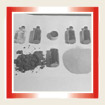|
Page 1 |
2
Dr. Karl Clark is strongly
associated with the hot water separation of
bituminous sands, and while he did not invent the
procedure, he improved upon it by utilizing chemical
reagents and fine-tuning the process, resulting in
the cleanest bitumen achieved at that time.
In 1920, Clark considered the heavy, viscous oil
coming from the tar sands as a potential ingredient
in road surfacing. At the time, the dirt roads of
the prairies were vulnerable to moisture, and Clark
thought a bituminous emulsion would be useful for fixing the roads so they
could stand up to wet weather.
 In the 1920s, standard techniques of emulsifying
paving material made use of a soap reagent. Clark
found, however, that when he tried this process with
the Northern Alberta sands, the sand and the oil
(bitumen) separated; the sand sank to the bottom,
with the bitumen settling
above it. Unfortunately,
bitumen is heavier than water, and so the water
involved in the procedure came out on top. As such,
it was impossible to recover the bitumen without
mixing it with sand again. In the 1920s, standard techniques of emulsifying
paving material made use of a soap reagent. Clark
found, however, that when he tried this process with
the Northern Alberta sands, the sand and the oil
(bitumen) separated; the sand sank to the bottom,
with the bitumen settling
above it. Unfortunately,
bitumen is heavier than water, and so the water
involved in the procedure came out on top. As such,
it was impossible to recover the bitumen without
mixing it with sand again.
Clark explained his discovery in a letter to Dr. H.
M. Tory, President of the University of Alberta.
Within weeks, Clark was hired to Tory’s Research
Department, the precursor to the Alberta Research
Council (ARC), in order to study the separation
process further. Bituminous sand as a paving
material was soon abandoned as it was uneconomical,
and so Clark's focus shifted to cleaning the bitumen in order to process it.
Clark began experiments with hot water, an idea
pioneered by others such as Sidney Ells, an engineer
for the Federal Department of Mines. Tar sands
frothed when dispersed in hot water. After months of
tests, Clark found that if he created a pulp of tar
sand in hot water, a froth of oil would form once
more hot water was introduced. This froth then
floated to the surface while the sand sank to the
bottom, thus allowing the froth to be easily collected
from the surface.
With some minor adjustments, this method of
separating bituminous sands was patented in 1929,
though it would be decades of experimenting with new
techniques in oil refinement before the oil sands
yielded more valuable petroleum products.
|
 Heritage Community Foundation Presents
Heritage Community Foundation Presents


 Heritage Community Foundation Presents
Heritage Community Foundation Presents